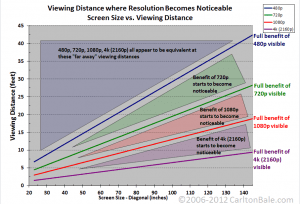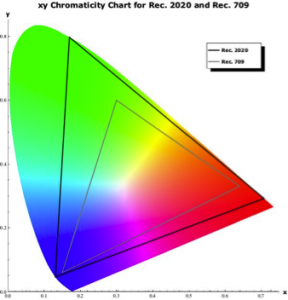Innovation
ChirpStack: The New Open Source LoRa Server
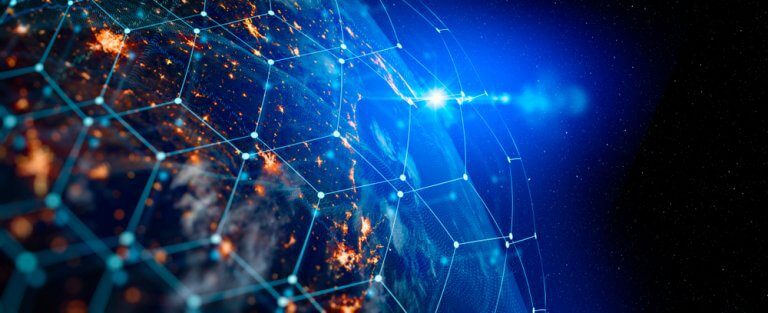
Over the past couple of years, CableLabs and Orne Brocaar have introduced multiple major releases of the LoRa® Server, a community led open source LoRaWAN® network server. The goal of this effort is to provide a powerful tool for enabling LPWAN services using unlicensed bands worldwide. The server is licensed under the MIT license, so it can be used freely for any use from testing to production. Our objective continues to focus on enabling growth and creativity in the LPWAN ecosystem using the LoRaWAN protocol.
We are excited to announce that LoRa Server has been renamed ChirpStack™. What does this rebranding mean for our community of users? Well, nothing really, with exception of assuming a new name. The server continues to provide the functions, capability, LoRa Alliance® compliance and MIT licensing it always has. However, the name and URL location of the resources has changed.
The ChirpStack software, source-code and documentation are now available here: https://www.chirpstack.io. The discussion forum is now available here: https://forum.chirpstack.io

Since its debut in 2016, the LoRa Server project has gained a lot of traction and is now being used by thousands of users from (currently) 144 countries around the world. And, we fully expect the ChirpStack project will continue to serve this user base with valuable tools, software, and discussion.
“Solutions built on Semtech’s LoRa devices offer the real potential to change the world by delivering analytical insight into how we live and work today. To create a smarter tomorrow, developers working with LoRa devices and the LoRaWAN protocol need access to easy-to-use accelerators that help drive applications to market more quickly,” said Alistair Fulton, Vice President and General Manager of Semtech’s Wireless and Sensing Products Group. “CableLabs and its ChirpStack software have contributed to the growth of LoRaWAN, creating value to the ecosystem by helping to simplify the IoT development process and enable the creation of new, innovative products for the next generation of use cases.”
We have automated the renaming process in the lastest version as much as possible, and we hope this migration will only be a nominal inconvenience. A full list of considerations and changes have been provided on the forum. If you experience any challenges with this migration, please communicate issues and feedback on the forum.
In the latest release(s) you will find a lot of interesting new features. Using NetID filters it is possible to reduce the bandwidth usage of your gateways. This is useful when you are using a cellular backhaul. We have also made it easier to correlate log messages across the different components, which will help when troubleshooting issues as they occur. To increase the geolocation accuracy, we have added support to perform geolocation on multiple uplink frames. We will continue to improve and add new features and we are looking forward to your feedback and contributions to the ChirpStack project.
Note: LoRa is a registered trademark or service mark of Semtech Corporation or its affiliates.

Innovation
CableLabs Announces Major Update to the Open Source LoRa Server

Last week, in my blog post “CableLabs Open Source LPWAN Server Brings Diverse LPWAN Technologies Together,” we announced our LPWAN Server. This project is open source and:
- Provides new capabilities to bring IoT LPWAN wireless technologies together
- Is a flexible tool to enable the use of multiple servers across multiple vendors
The LPWAN Server was designed to work with the CableLabs sponsored open source LoRa Server and, together, provide a comprehensive solution to enable many LPWAN use cases. It has been nearly 18 months since we released the first major revision of the LoRa Server and, during this time, many improvements have been made.
In this blog, I’ll discuss why we invested in the LoRa Server, how the project continues to improve and how it aligns with the latest specifications released from the LoRa Alliance. If you need a refresher on the LoRa Server, please see my blog post “CableLabs Announces an Open Source LoRaWAN Network Solution.”
Why Did CableLabs Invest in the LoRa Server?
The LoRa Server project was conceived and started by Orne Brocaar. His goal was to develop a fully open source LoRa Server that could be used by anyone looking for the opportunity to gain an introduction into LoRaWAN and LPWANs. Due to limited time and resources, the project remained minimal in functionality and progression for nearly a year.
CableLabs had a goal to find a fully community-based open-source LoRaWAN server to provide the cable industry with the ability to easily prototype, test and trial LPWAN services using unlicensed RF spectrum. We discovered the LoRa Server and began investing heavily into developing the functionality to align with our goal. Shortly after this, Orne joined the CableLabs team to lead the development of the LoRa Server into the exceptional tool it has become.
Our design strategy began and continues to focus on these key areas:
- Full functional compliance with LoRa Alliance specifications
- Extensive debug and logging tools
- Protocol transparency to the operator of the server
- Scalable for any sized testing, trial or use
While our goals are to provide a tool for testing, trials and related use, the server is fully open-source under the MIT license. This allows it to be used freely for any use from testing to production. We desire to enable growth and creativity in the LPWAN ecosystem using the LoRaWAN protocol.
Introducing a New Version of the LoRa Server
In the summer of 2018, we released LoRa Server v2. We have released several additional updates to introduce new features and improvements since then while maintaining backward compatibility with LoRaWAN 1.0. Where v1 (released in June 2017) was focused on the first stable release since many test versions, v2 focuses on an improved API, User Interface (UI), compliance with LoRaWAN 1.1 and additional interesting new features.
LoRaWAN 1.1
The major feature of LoRa Server v2 is support for LoRaWAN 1.1. LoRaWAN 1.1 is an important release for many reasons:
Enhanced Security
LoRa Server v2 enhances the security of LoRaWAN devices by providing LoRaWAN 1.1 support. Not only does LoRaWAN 1.1 add better protection against replay attacks, it also adds better separation between the encryption of the mac-layer and the application payloads. This also facilitates the implementation of roaming in the future. It is important to mention that LoRa Server v2 still supports LoRaWAN 1.0 devices.
Re-designed Web-Interface
Another major feature of LoRa Server v2 is the completely redesigned and re-written web-interface. The fantastic new interface is more responsive because of smarter caching and it is more user-friendly and easier to navigate.
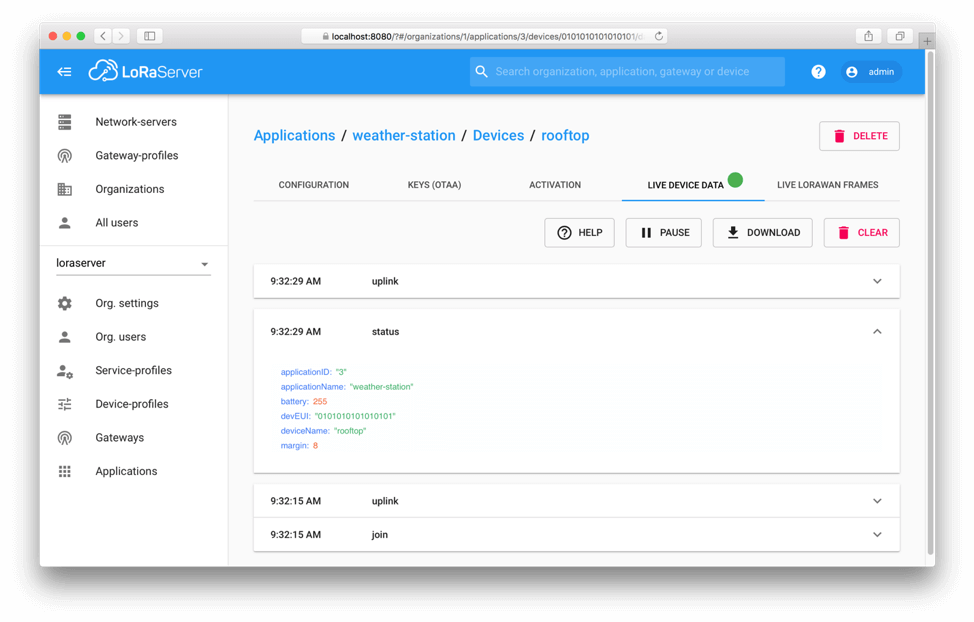
API improvements
As many users are integrating LoRa Server into their own platforms using the LoRa Server APIs, we want to make sure these APIs are easy to use and are consistent. LoRa Server v2 removes many inconsistencies present in the v1 API and makes it possible to reuse objects so that code duplication is avoided.
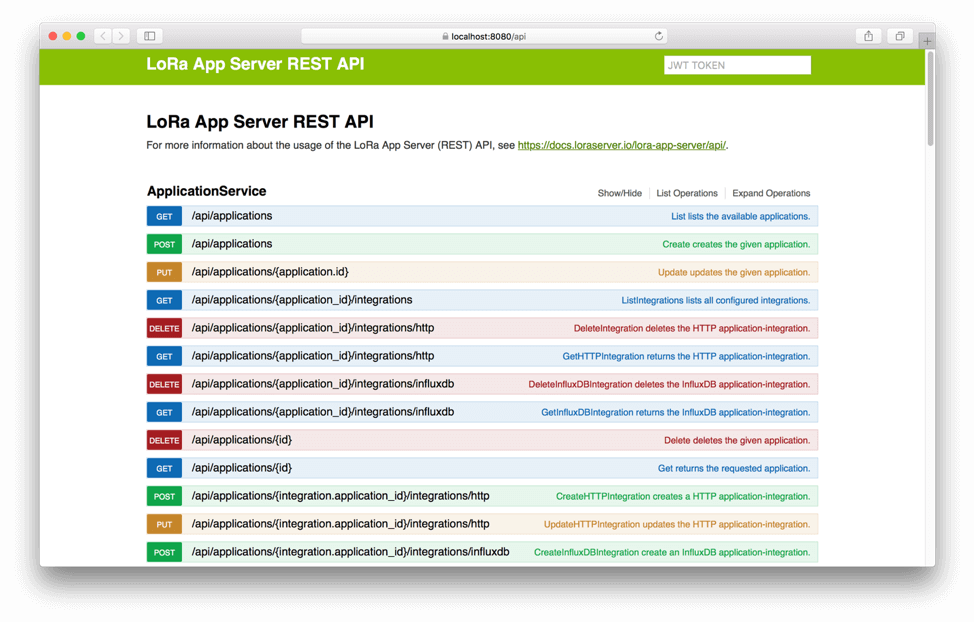
Multicast
Multicast was a feature which was long requested and is finally present since LoRa Server v2.1.0. This feature makes it possible to assign devices to a multicast-group, so a group of devices can be controlled without the need to address each device individually, reducing the required airtime. One of its use cases is Firmware Updates Over The Air (FUOTA) which was recently released by the LoRa Alliance. In an upcoming version, we are planning to further integrate this into the LoRa App Server component of the LoRa Server.
Geolocation
Since LoRa Server v2.2.0, the server provides geolocation support. By default, it integrates with the Collos platform provided by Semtech, but by using the provided geolocation API, other platforms can be used. Please note this requires a v2 LoRa Gateway with geolocation capabilities, as a high precision timestamp is required for proper geolocation.
Google Cloud Platform integration
A common request we have received is how to scale LoRa Server. Since LoRa Server v2.3.0, it is possible to make use of the Google Cloud Platform infrastructure to improve scalability and availability. LoRa gateways can directly connect to the Cloud IoT Core MQTT bridge (using the LoRa Gateway Bridge), and the LoRa Server and LoRa App Server integrate with Google Cloud Pub/Sub.
Open Source Community
The open source community is encouraged to take advantage of our efforts and further functional support for even more gateways, solutions and use cases. There are many LoRaWAN gateways and applications and we would like the development community to help us integrate these.
To find out more information about the LoRa Server and become involved in this project, go to the LoRa Server site.
Subscribe to our blog for updates on the open source LoRa Server.

Innovation
CableLabs Open Source LPWAN Server Brings Diverse LPWAN Technologies Together

CableLabs is excited to announce a new open source project called LPWAN Server. The LPWAN Server provides new capabilities to bring IoT LPWAN wireless technologies together.
Before we go into more details on the LPWAN Server, let us first get some background into this space. In my previous blog post, I discussed the Internet of Things (IoT) as a growing industry comprised of a massive number of devices that connect to each other to benefit our lives. For example, a soil moisture sensor can help a farmer determine when to water their crops rather than potentially wasting water through a legacy timed-based approach. In that blog post, CableLabs announced the release of an open source LoRaWAN solution, LoRa Server.
What is LoRa Server and LPWANs?
LoRa Server is a community-sourced open source LoRaWAN network server for setting up and managing LoRaWAN networks. LPWANs connect sensors designed to last for years on a single battery transmitting information periodically over long distances.
There are many potential use cases shown below:
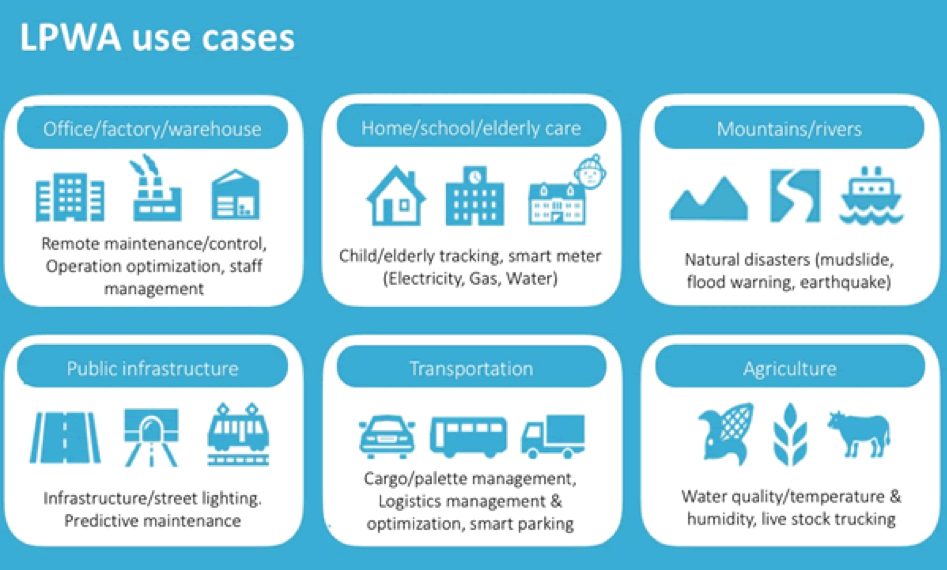
LPWA use cases graphic by LoRa Alliance member Actility at the occasion of its collaboration with Softbank in Japan.
LPWANs are designed to cover large geographical areas and minimize the amount of power required for sensors to interact with the network. There are many solutions available to enable these use cases, including:
- LoRaWAN™: LoRaWAN is a partially open unlicensed spectrum solution developed through the specifications efforts of the LoRa Alliance: While the specifications are developed within the Alliance, they are made available to the general public upon completion.
- Mobile solutions from 3GPP: 3GPP defined Cat-M1 and NB-IoT for varying connectivity requirements. These are also open standards, but they require licensed spectrum.
- Weightless: Weightless is an open specification effort but has struggled in gaining traction in the LPWAN space. It should be noted, there are many other proprietary LPWAN technologies with active deployments and use in this ecosystem.
Why No One Solution Will Own the Technology
We believe no one LPWAN technology will fully own this IoT space. Our reasoning for this belief comes from multiple factors. As we look at the sensors in this space, some are intended for real-time applications with consistent and verified uploads, while other sensors simply wake-up periodically and transmit small data payloads. Without going into more specific examples, we believe some LPWAN applications are better suited for licensed spectrum mobile networks, while other LPWAN applications are better supported with unlicensed solutions, such as LoRaWAN™. LoRaWAN services can be further explored through some of our member offerings via MachineQ™ and Cox℠ .
Our New Open Source Solution
With these considerations in mind, we developed a new open source solution to enable easily moving data from devices and applications across varying network types and related solutions. The LPWAN Server was designed to enable multiple use cases:
- First, it can be used to simply migrate or operate between two LoRaWAN™ network servers, such as the LoRa Server and The Things Network.
- Second, and more importantly, the long-term design intention is to enable the routing of multiple LPWAN technologies, such as LoRaWAN™ and SigFox or LoRaWAN™ and Narrow Band IoT (NB-IoT). In order to integrate IP-based devices, the server will include a “relay server” of sorts. This allows for the IP traffic to mix with LoRaWAN™ traffic for a single upstream interface to an application or data collector, such as Google Cloud and Microsoft Azure.
Our goal with this project is to see developers add more back-end integration with network servers and technologies to enable this routing of traffic across many LPWAN technologies.
LPWAN Server Use Cases
The LPWAN Server was designed to support the following use cases:
1. Multi-vendor LoRaWAN™ environment: Using the LPWAN Server in a multi-vendor LoRaWAN™ environment allows a network provider to:
- Test multiple servers from multiple vendors in a lab,
- Trial with multiple network servers from multiple vendors
- Run multiple vendor solutions in production
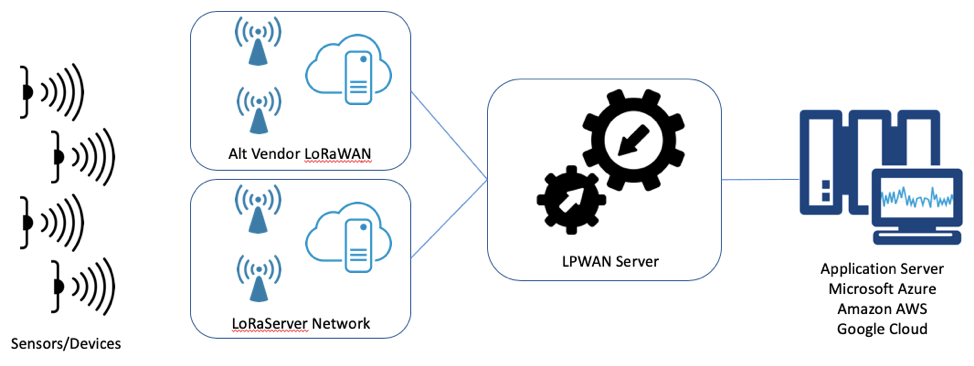
2. NB-IoT & LoRaWAN™ device deployment: The LPWAN Server will allow you to operate a single application for devices deployed on both LoRaWAN™ and NB-IoT networks. The LPWAN Server will enable an IP relay-server for connecting with NB-IoT (and Cat-M1) devices commonly behind a 3GPP mobile network Evolved Packet Core (EPC). It also allows for managing devices on the LoRaWAN™ The devices are managed under a single application within the LPWAN Server. This allows an application to receive data over a single northbound Application Program Interface (API) rather than maintain API connections and data flows to multiple networks.
3. Simplify device provisioning across multiple LPWAN network types and solutions: The LPWAN Server simplifies provisioning to one or more LPWAN networks. A major challenge for a back-office solution is to integrate provisioning into a new network server. This is further complicated with multiple new network servers and types. In order to simplify this, the LPWAN Server manages the APIs to the networks, and the back-office solution only needs to integrate with a single API to the LPWAN Server. The following figure illustrates this.

4. Create consistent data order and formats from LPWAN devices: The final use case explains how the LPWAN Server can normalize data from varying devices on one or more networks. Unfortunately, even in a single network environment, such as LoRaWAN™, there is no standard for data formats from multiple “like” sensors. For example, a weather sensor from two different vendors could send the same type of data but reverse the order. An application will need to interpret the data format from multiple sensors. In order to simplify this, the LPWAN Server can be used to reformat the data payload into a common format for sending up to the application server. In this way, the application server will not need to interpret the data.
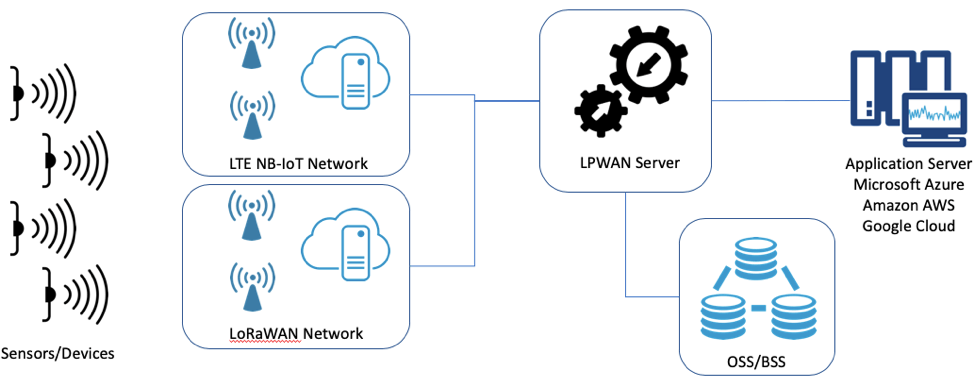
CableLabs & the Development Community Together
The LPWAN Server is intended to be a community open source project. The initial release from CableLabs provides support for a multi-vendor LoRaWAN™ use case. The back-end has been designed for future support of all of the use cases, and the UI is flexible to support them as well. We currently are using the server for data normalization, too; however, this is via a back-end process.
The open source community is encouraged to take advantage of the initial CableLabs development and further the development into a useful application for even more servers, solutions and use cases. There are many network types and related servers, and we would like the development community to help us integrate these.
To find out more information about the LPWAN Server and become involved in this project, go to https://lpwanserver.com.
The LPWAN Server was designed to work with the CableLabs sponsored open source LoRa Server. In an upcoming blog, I will discuss how that project continues to evolve and align with the latest specification releases from the LoRa Alliance. The LPWAN Server and LoRa Server provide a comprehensive solution to enable many LPWAN use cases.

Innovation
CableLabs Announces an Open Source LoRaWAN Network Solution

The Internet of Things (IoT) is a growing industry comprised of a massive number of devices that connect to each other to benefit our lives. Examples of these include the Nest thermostat, security cameras, Amazon’s Alexa, and Apple Watch. Refrigerators can talk with the internet to order milk and Fitbits tell you when to step more to meet your daily exercise goals.
A new area of IoT involves the use of sensors designed to last for years on a single battery transmitting information periodically over long distances. The infrastructure to support all of these connected devices is commonly referred to as a Low Power Wide Area Network (LP-WAN).
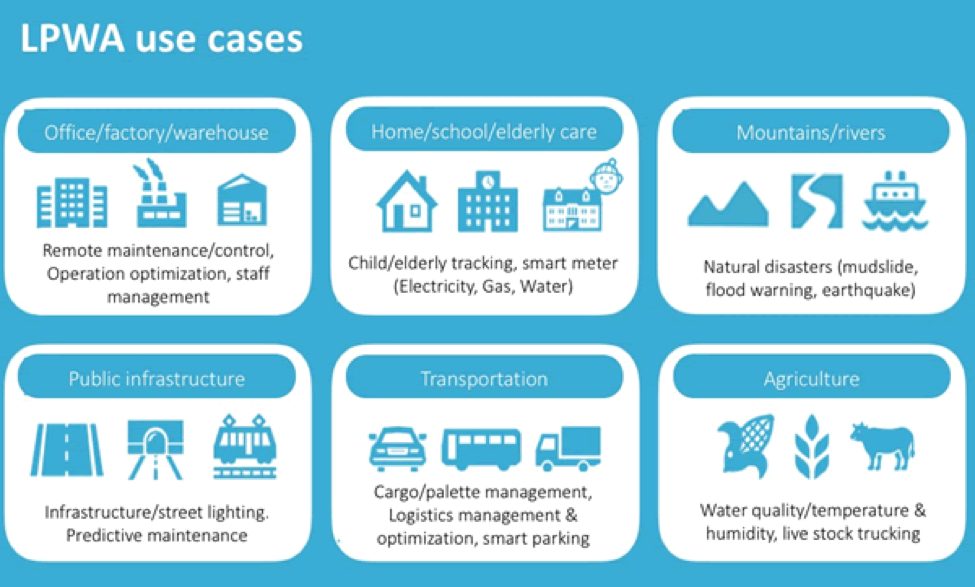 Figure 1 - LPWA use cases graphic by LoRa Alliance member Actility at the occasion of its collaboration with Softbank in Japan
Figure 1 - LPWA use cases graphic by LoRa Alliance member Actility at the occasion of its collaboration with Softbank in Japan
LP-WAN networks are designed to cover large geographical areas and minimize the amount of power required for sensors to interact with the network. There are many solutions available to enable this network, including Ingenu, Sigfox, LoRaWAN, 3GPP and Weightless.
CableLabs is pleased to announce an open-source LoRaWAN solution. LoRa is a semi-proprietary solution as it is owned and licensed by Semtech, and a closed consortium (i.e. LoRa Alliance) develops the LoRaWAN specification around the Semtech solution architecture.
Once the consortium concludes a revision of this effort, they make it publicly available. Ingenu and Sigfox are examples of fully proprietary solutions with closed development and ecosystems. In an effort to be more open, they have software development kits available for sensor manufacturers to create sensors for their networks. Of course, these are merely examples of many more solutions emerging in this space. All of them are attempting to create their own advantage and benefits for network providers and consumers. We attempted to highlight some of the more commonly known solutions available, but these are not meant to be preferential or endorsed by CableLabs and are not an exhaustive listing.
LoRaWAN is a long range, low power wireless protocol that is intended for use in building IoT LP-WAN networks. IoT devices send small data packets to any number of “gateways” that may be in the several-kilometer range of a sensor via the LoRaWAN wireless protocol. The gateways then use more traditional communications such as wired Internet connections to forward the messages to a network-server which validates the packets and forwards the application payload to an application-server.
CableLabs chose to develop a LoRaWAN open-source solution because we believe it is a good compromise between proprietary and open solutions, and it provides many of our members an opportunity to compete in the low power wide area (LPWA) space.
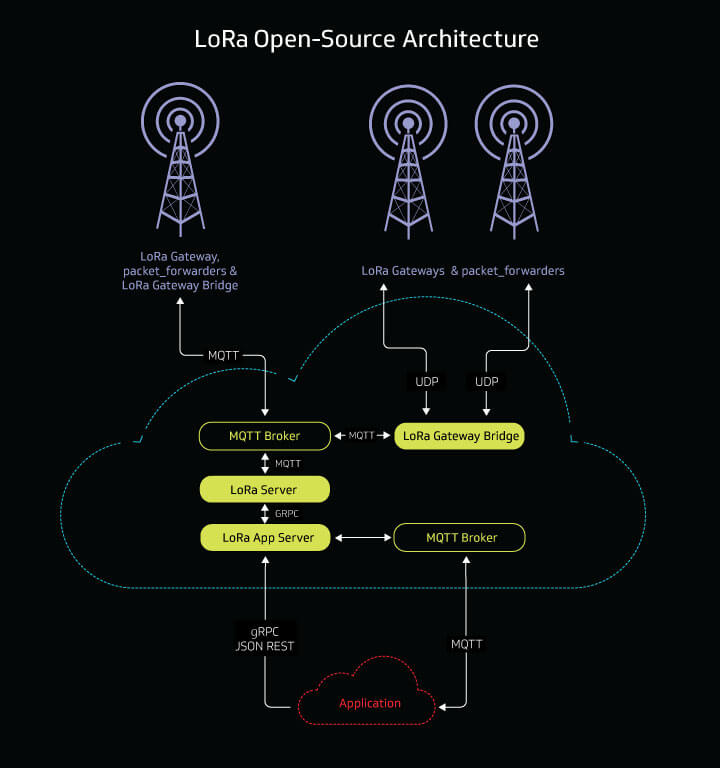 Figure 2 - LoRaWAN Example Network Architecture
Figure 2 - LoRaWAN Example Network Architecture
In the past, CableLabs has often developed solutions specific to the cable industry, but we believe open-source provides consumers a great benefit as it will spur growth in an industry intended to enrich our lives. This enrichment comes through devices intended to inform us of many things. For example, many of us have driven by a city park during a rain storm and noticed the sprinkler system running. This is a waste of water and further impacts our climate. What if we had soil moisture sensors that could communicate with a sprinkler controller to inform it when it requires water? This could save countless gallons of water, which is extremely valuable, especially in drought-stricken regions.
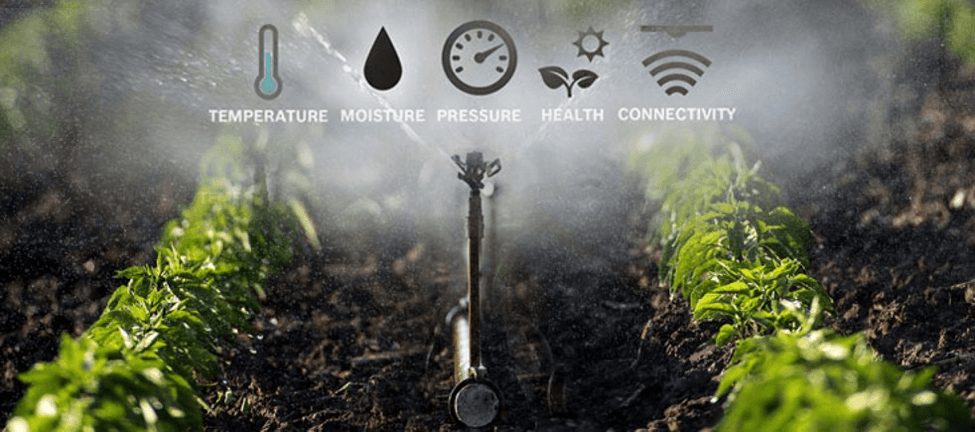 Figure 1 - LPWA use cases graphic by LoRa Alliance member Actility at the occasion of its collaboration with Softbank in Japan
Figure 1 - LPWA use cases graphic by LoRa Alliance member Actility at the occasion of its collaboration with Softbank in Japan
Another example could be to inform a loved one when an aging relative has taken their pills for the day, gets out of bed or sits in a chair too long. All of these are examples of the benefits of sensors enabled by LP-WANs.
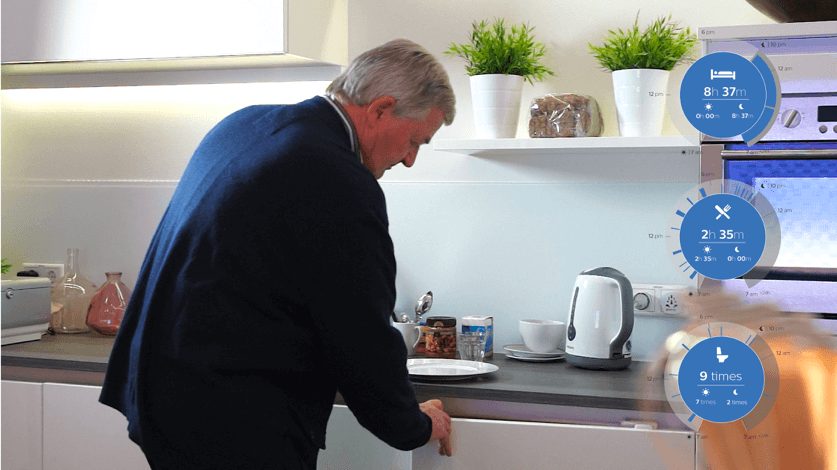 Figure 4 - Philips CareSensus Solutions
Figure 4 - Philips CareSensus Solutions
In order for us to realize these benefits, LP-WANs need to be deployed broadly across national and international regions. This will enable the use of many sensors across these same regions. As we make use of the sensor data, it will enrich our lives with information to make better choices, ensure higher quality results and guide us towards a better future. By making a portion of this network available for open-source, our goal is to lower the barrier for the cable industry and other industry participants to enable these solutions for consumers and governments. Together we can truly change the world, and it should not be limited by costly barriers.
-
More information on the CableLabs LoRa server, including documentation and code repository, can be found here.
With a strong focus on innovation, CableLabs develops technologies and specifications for the secure delivery of high-speed data, video, voice and next generation services. Don't forget to subscribe to our blog to read more about our innovative technologies in the future.
Consumer
Next Generation Video: Beyond 4K

4K Video has captured the attention of consumers, retailers and television manufacturers. Next generation video is not just about 4K, though. Improving the video experience goes beyond resolution itself.
CableLabs operates a Video Quality Lab at its Louisville, CO facility where various formats of video streams have been analyzed, compared, and tested in a controlled environment. I have produced a short video that explains factors beyond 4K such as bit depth, color space and high dynamic range that we encourage you to view.
Technical advances offer a new standard for bit depth. Previously 8 bits, the anticipated de facto standard will increase to 10 bits, which will reduce the undesirable phenomenon of color banding for a cleaner consumer experience.
Regarding color space, television manufacturers are anticipated to adopt the ITU Standard of BT.2020 that increases the size of the color gamut.
Finally, high dynamic range, recently introduced to motion pictures, increases the peak luminance output, so that the brighter portions of the video increase in intensity while maintaining detail in the dark portions of the video .
Experience these new video technologies during this 3-minute video segment.
Daryl Malas is Principal Architect in the Application Technologies Group at CableLabs.
Video
4K vs. UHDTV: Clearing up the Confusion
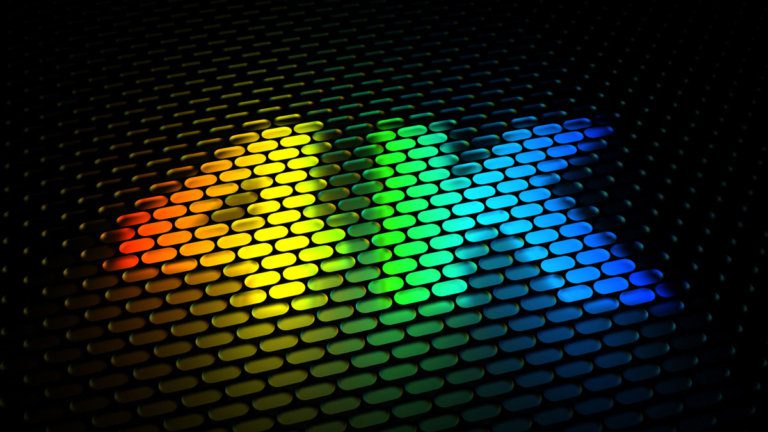
The 2014 National Association of Broadcasters (NAB) show in Las Vegas features many new products for 4K and Ultra High Definition Television (UHDTV). But what is the difference between the two?
Here’s a quick overview:
What Does 4K Mean?
4K is a term used to describe the cinema resolution of 4096 x 2160, which has a cinema aspect ratio of 21:9. For more than the past year many theaters across the world have shown movies in 4K.
While the movie industry was the first to begin using this resolution, the term 4K is still used as the technology transitions to the television market.
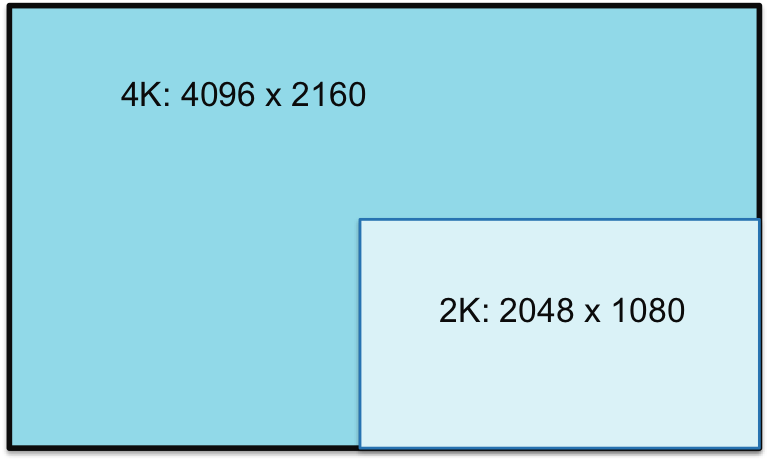
What is UHDTV?
As manufacturers began to consider higher resolutions for television, there was no terminology to describe 4K. Realizing this challenge, the Society of Motion Picture and Television Engineers released a set of documents (SMPTE ST 2036) describing Ultra High Definition Television (UHDTV), intended to become the industry standard terminology.
Within this document two different resolution sizes were defined for UHDTV. UHDTV1 describes what the television world has coined as 4K. The resolution for UHDTV1 is 3840x2160, which is actually slightly smaller than cinematic 4K, due to the change in aspect ratio from 21:9 to 16:9. In addition,UHDTV2 has been coined 8K (or Super Hi-Vision). The resolution for UHDTV2 is 7680x4320.
Here’s how 4K and 8K, or UHDTV1 and UHDTV2 compare to HD:
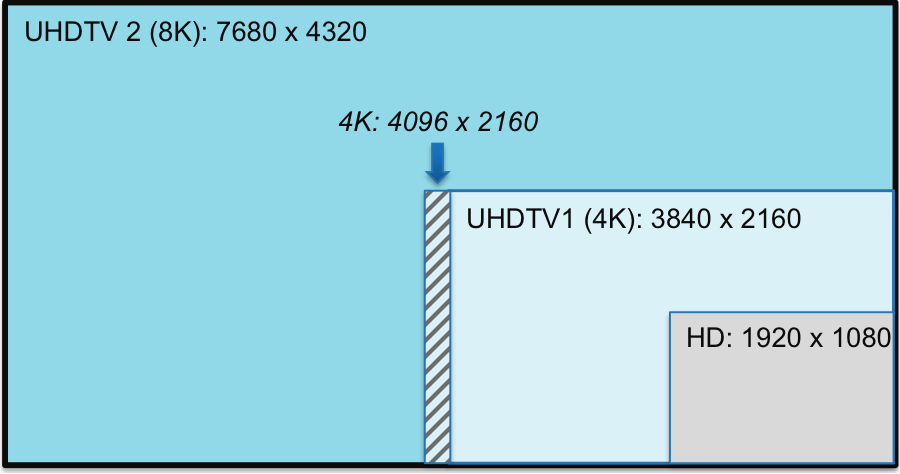
4K Is UHDTV – Sometimes
Unfortunately, due to marketing, the term 4K was already being identified with televisions at the time of the SMPTE document release, and has never been supplanted by UHDTV. Thus, consumers find themselves wondering what the difference is. Now we are starting to see UHDTV 4K or 4K UHDTV labeled TVs. In both of these cases, regardless of the term used, the actual resolution is 3840x2160.
To really know what Ultra High Definition technology is inside the TV you’re looking at, you have to pay attention to the resolution. Until this technology becomes widespread and the next generation of television resolution is in the hands of consumers, you may hear several different terms used for the same resolution.
So the next time you see a myriad of 4K and UHDTV technology examples at NAB or anywhere else, look for the resolution and you’ll finally understand the difference.
Also don’t forget that there is more to an UHDTV than resolution. Support for an expanded color space and up-scaling from HD to UHD resolution are both important.
Daryl Malas has been with CableLabs for over six years. As a Principal Architect in the Video Application Technologies group, he is leading research on 4K (UHDTV1) for CableLabs. In addition, he has led other projects related to advanced video technologies, Content Delivery Networks (CDNs) and handling blackouts and advertisements within IP video delivery.
Video
4K TVs: Grasping for Consumers
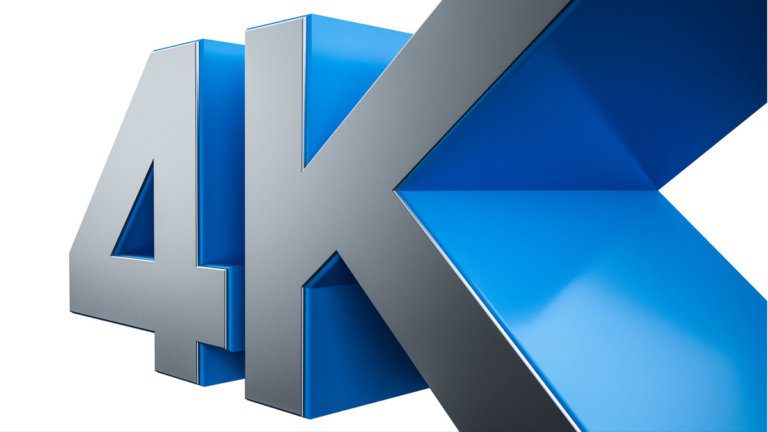
4K is a prominent buzzword in home entertainment and across the content industry. No doubt that during the Sochi Olympics, you will see an advertisement somewhere for UHDTV or 4K TVs, and you might even consider if the Olympics will look even better on your very own 4K TV. More and more 4K TVs are arriving at your local electronics store. In some cases, you might also hear it called UHDTV. In either case, this technology has been extensively researched and blogged about for the past few years, so what does it mean now? How do we separate hype from reality?
First, the 4K TV dam has been breached. Already we see many TV options appearing on electronics shelves with support for 4K, and we will see many more over the coming months and years. In fact, by next Christmas, you may just find the “old” HD TVs on the clearance aisle towards the back of the store. So, why are TV manufacturers so interested in selling these new 4K TVs? Over the past 10 years, TV manufacturers have flooded the consumer marketplace with HDTVs. Most people have at least one HDTV of some size in their home. With the market flooded, consumers only start moving into a cycle of buying a new TV when their current one fails (every 5 – 8 years). Of course, TV manufacturers are looking to sustain their revenues and profits. This means they look for compelling reasons for consumers to accelerate their purchasing cycle: enter 4K. Unfortunately, 4K has not proved to be quite as exciting as we all hoped it would be. Here are a couple of issues: First, consumers really can’t see the benefits of 4K due to screen size and viewing distances in most consumers’ living rooms. The issue involves our ability to perceive detail as we move away from any object. A simple example of this is to move up close to a lightly textured wall. Up close you can see every dimple and bump on the wall. Now move back 10 feet and see how many of those bumps and dimples you can identify. With this in mind, consumers have two options: 1) buy a really big screen (120” or more); or 2) move their sofa within 5 or 6 feet of their 65” TV. As you can see from the viewing distance chart, with a 65” TV you will have to sit right around 6 feet away to see the benefit of the 4K resolution.
(click on graphic for enlarged presentation)
Graphic Credit: Carlton Bale
Second, content providers aren’t really prepared to deliver 4K content to these new TVs, and some are several years away from providing any broadcast 4K. Sure there are rumblings of 4K from providers, but this content will be mostly limited to movie or trial content. Very few providers are adequately prepared to deliver a broad range of 4K broadcast content anytime soon, and they’re really debating the potential value. If consumers can’t see the value of it, why broadcast it?
So, where do we go from here? Are 4K TVs doomed, or just another passing fad like 3D TVs? There is some good news for 4K. Due to the fact it really isn’t much more expensive to build a 4K TV than an HDTV (<$300 extra), consumers don’t need to see as compelling a difference as would be required for a much higher premium. Many can be expected to pay the more modest premium with an expectation of “future proofing” their TV. This will motivate manufacturers to continue shifting their production in favor of 4K; ultimately 4K volumes will exceed HDTV volumes so that scale economies favor 4K and the perceived premium will shrink and eventually disappear. In addition to lower cost, as we saw at this year’s Consumer Electronics Show (CES), TV manufacturers recognized 4K resolution alone wasn’t going to cut it. With this in mind, they are introducing new video factors to improve the consumer experience. These new video factors include 10-bit versus 8-bit color depth. The benefits of this technology will create smoother transitions between colors as demonstrated in the following graphic:
Graphic Credit: Metus Ingest
In addition, cable operators are working with content providers to deliver higher frame rates to consumers, which will improve the overall smoothness of content, especially sporting events. They are also considering ways to improve dynamic range, which allows scenes to have a greater difference between bright content and dark content (e.g., sunlight and shadows). An example solution is Dolby Vision developed by Dolby for enhancing dynamic range as indicated in their graphic provided below:
(Dolby and the double-D symbol are registered trademarks of Dolby Laboratories.)
In addition to dynamic range, content providers and TV manufacturers are evaluating larger color spaces. A color space defines the number and shades of colors available for producing and displaying content. For a long time the industry has used the ITU REC.709 defined color space, which is less than our eyes can actually perceive. This was necessary in part due to TV technology at the time of its creation. Since then, TV technology has improved dramatically, and it is capable of displaying more colors. This has been recently marketed as wide color gamut. The industry is considering how to produce content and display it in more colors with the introduction of the ITU Rec.2020 specification, which greatly increases the number of colors as indicated in the following chart.
All of these features will most likely become available on new 4K TVs, so combined with an increase in resolution, these will provide a very compelling consumer experience. At CES, we saw many TV manufacturers already demonstrating variations of the technological advancements, and the cable industry has already been working with the entertainment industry to ensure they are adequately prepared to deliver content to take advantage of these advancements.
UHDTV is about to become more exciting, and it really has nothing to do with 4K.
Daryl Malas has been with CableLabs for over 6 years. As a Principal Architect in the Video Application Technologies group, he is leading research on 4K (UHDTV) for CableLabs. In addition, he has led other projects related to advanced video technologies, Content Delivery Networks (CDNs) and handling blackouts and advertisements within IP video delivery.


